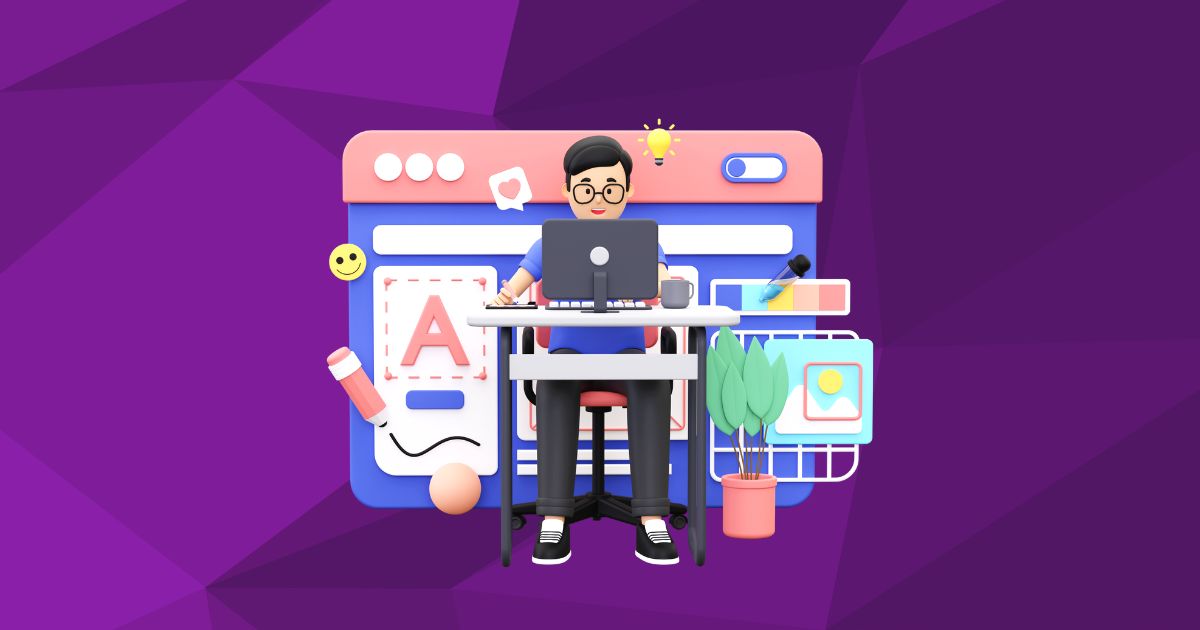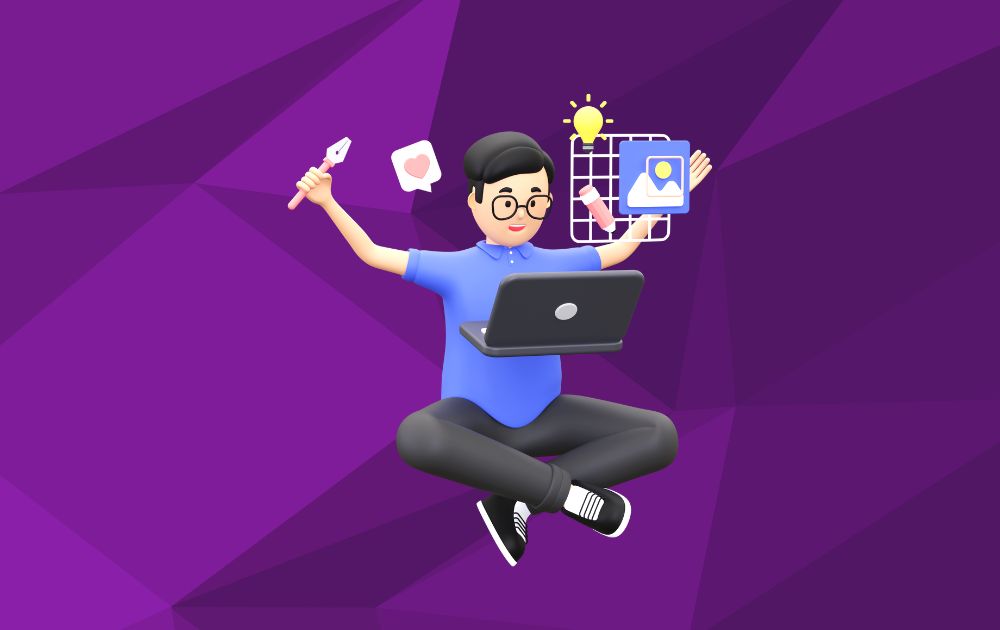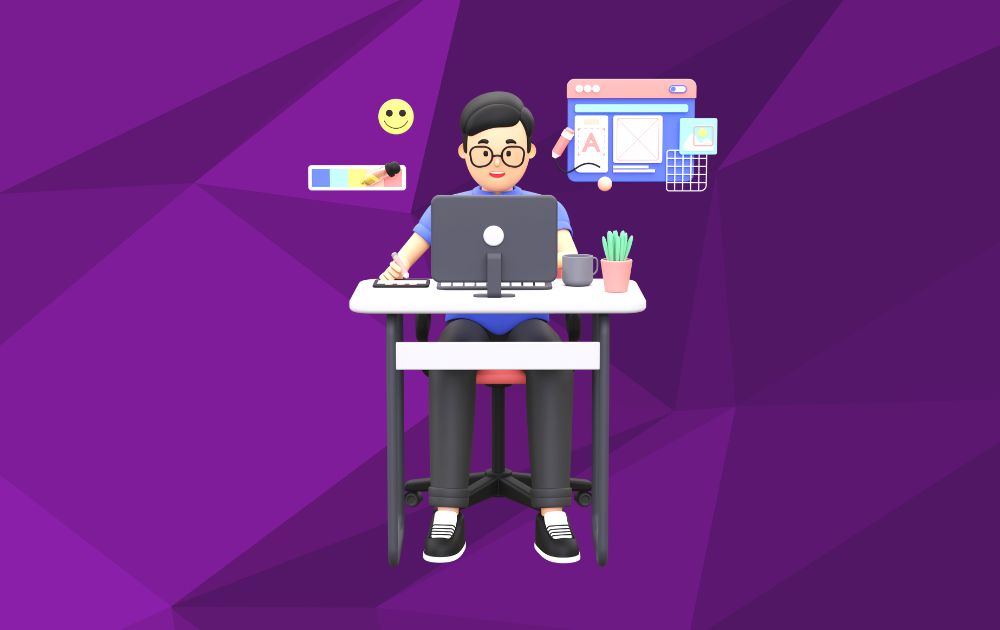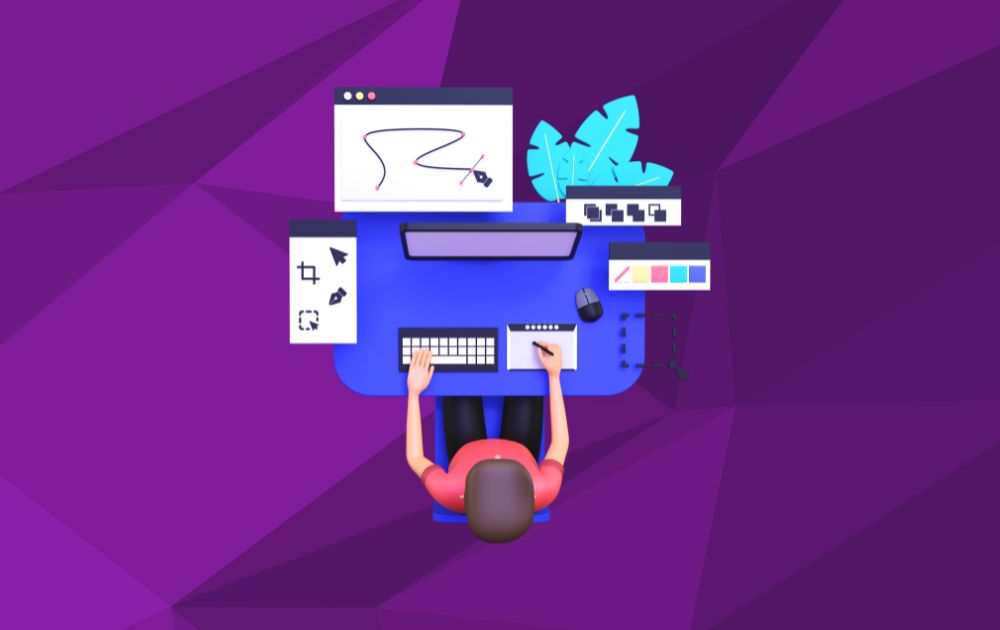
Graphic designers wield a unique power to shape perceptions, convey messages, and capture emotions through artistry.
If you dream of becoming one yourself and want to learn how to become a graphic designer, you’ve come to the right place!
Whether you’re drawn to the idea of breathing life into digital canvases or transforming mundane ideas into captivating visual narratives, this step-by-step guide will teach you how to navigate the exciting path toward mastering graphic design.
Let’s dive right in!
Step 1: Self-Assessment and Research

“Design is thinking made visual.” – Saul Bass
Before you learn how to become a graphic designer, it’s crucial to understand the role first. So, what do graphic designers do? Generally, graphic designers create visual content for various mediums, such as print, digital, and multimedia.
That said, if you’re researching how to start graphic design for beginners, you can start by assessing yourself. Take stock of the skills that you may already have or need to work on, such as:
- Creativity
- Attention to detail
- Eye for aesthetics
- Knowledge of design software like Adobe Creative Suite (Photoshop, Illustrator, InDesign) or other relevant tools
Another factor to decide on is your education path. Would you want to take a graphic designer course or venture into a self-taught approach? While a degree or diploma in graphic design can provide a structured foundation, many successful designers are also self-taught.
Step 2: Education and Skill Development
“Design is the intermediary between information and understanding.” – Hans Hoffmann
If you choose to acquire formal education in graphic design, you can enroll in a graphic design program at a college, university, or art school. Formal programs would offer a comprehensive curriculum covering design principles, software skills, rules of typography, color theory, and more.
If formal education isn’t feasible, explore online courses that teach design principles and software skills. Here are a few online learning platforms to check out for graphic design courses:
Regardless of your educational path, practice is crucial. Experiment with design projects, create personal projects, and try to replicate existing designs to improve your skills.
Step 3: Build Your Design Skills

“It’s through mistakes that you actually can grow. You have to get bad in order to get good.” – Paula Scher
If you’re serious about exploring how to become a graphic designer, you must familiarize yourself with industry-standard software like Adobe Photoshop, Illustrator, and InDesign. Learn their tools and functions through tutorials and hands-on practice.
Whatever software you use, it’s also crucial to master design principles, such as:
- Typography. This includes font selection, spacing, and hierarchy.
- Color Theory. You must learn about color combinations, contrast, and mood to create visually appealing designs.
- Layout and Composition. You must learn how to arrange elements on a page or screen effectively. Understand the principles of balance, alignment, and white space.
Step 4: Create a Portfolio
“Styles come and go. Good design is a language, not a style.” – Massimo Vignelli
Build a portfolio showcasing a variety of projects. These may include logos, posters, brochures, website designs, etc. Your portfolio should demonstrate your versatility to potential clients or employers.
When building your portfolio, focus on quality rather than quantity. Include your best work that reflects your design skills and style.
If you lack client work, you can create personal projects to demonstrate your creativity and skills. Redesign existing brands, create fictional campaigns, or work on passion projects.
Step 5: Gain Practical Experience

“Have the confidence to fail. Persistence is key.” — Jessica Walsh
Look for internships at design agencies, studios, or companies with in-house design teams. Internships provide real-world experience and networking opportunities.
You can also try freelancing to gain practical experience and build your client base. Platforms like Upwork, Freelancer, and Fiverr can help you find clients.
Step 6: Networking and Exposure
“Make it simple, but significant.” – Don Draper
Create a professional online presence. Build a personal website showcasing your portfolio and design philosophy. Use social media platforms to share your work and connect with fellow designers.
You may also want to attend design workshops, conferences, and networking events to meet other professionals in the industry. Networking can lead to collaboration and job opportunities.
Step 7: Job Search and Career Development

“Every great design begins with an even better story.” – Lorinda Mam
Look for graphic designer positions in design firms, advertising agencies, publishing houses, or corporate settings. Tailor your portfolio and resume to the specific job you’re applying for.
Even as you land a project or a job, remember that being a graphic designer entails continuous learning. After all, design is constantly evolving, and you need to stay updated with industry trends, new software versions, and design techniques to keep up.
Frequently Asked Questions (FAQs)
What qualifications do I need to be a graphic designer?
The qualifications needed to become a graphic designer can vary depending on factors such as the specific job requirements, the industry you’re aiming to work in, and whether you plan to be self-employed or seek employment with a company. More than degrees or certificates, however, employers would always look at design skills first and foremost.
Can I learn graphic design on my own?
Yes, you can definitely learn graphic design on your own! Many successful graphic designers have taken the self-taught route and developed their skills through practice, online resources, and real-world projects.
How do I get graphic design without learning to be a designer?
If you need graphic design without investing the time and effort to learn how to become a graphic designer yourself, the solution lies in opting for professional graphic design services. By leveraging the expertise of skilled graphic designers, you can access top-quality designs tailored to your needs.
Sign up with Penji today and have your project done by the world’s top 2% talent.
About the author

Carla Deña
Carla is a journalist and content writer who produces stories for both digital and legacy media. She is passionate about creativity, innovation, and helping small businesses explore solutions that drive growth and social impact.








